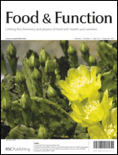
Food & Function
Scope & Guideline
Advancing the Science of Nutrition and Wellness
Introduction
Aims and Scopes
- Bioactive Components in Foods:
Research on the identification and characterization of bioactive compounds such as polyphenols, flavonoids, and peptides, and their physiological effects on health. - Nutritional Interventions and Health Outcomes:
Investigation of dietary patterns and specific food interventions in relation to chronic diseases, metabolic syndrome, and overall health. - Gut Microbiota Modulation:
Studies exploring how different food components influence gut microbiota composition and function, and the implications for health. - Food Processing and Functional Foods:
Research on the effects of food processing methods on the nutritional and functional properties of foods, and the development of functional food products. - Mechanisms of Action:
Investigating the molecular and cellular mechanisms through which food components exert their health benefits, including signaling pathways and metabolic processes. - Clinical and Preclinical Studies:
Conducting clinical trials and animal studies to evaluate the health benefits of food components and their potential therapeutic applications.
Trending and Emerging
- Microbiome-Gut-Brain Axis:
Research increasingly focuses on how dietary components influence gut microbiota and, in turn, impact mental health and cognitive functions, reflecting a growing understanding of the gut-brain connection. - Functional Foods and Nutraceuticals:
There is a rising interest in the development of functional foods and nutraceuticals that offer health benefits beyond basic nutrition, particularly in chronic disease prevention. - Personalized Nutrition:
Research is expanding into personalized nutrition approaches that consider individual variability in response to dietary components, influenced by genetics, microbiome composition, and lifestyle. - Food Technology Innovations:
Emerging technologies in food processing and preservation, such as nanotechnology and advanced encapsulation techniques, are increasingly being studied for their potential health benefits. - Sustainable Food Practices:
Research exploring sustainable dietary patterns and the health implications of plant-based diets is gaining traction, reflecting global trends towards sustainability and health.
Declining or Waning
- Traditional Nutritional Studies:
Research focusing solely on macronutrient profiles without considering the functional roles and bioactive properties of food components has decreased as the field moves towards a more holistic view of food. - Single Food Component Research:
Studies that isolate the effects of single food components without considering their interactions within complex food matrices and dietary patterns are becoming less common. - Basic Food Chemistry:
While foundational studies in food chemistry remain important, there is a notable shift towards applied research that connects food chemistry to health outcomes rather than focusing solely on chemical properties. - Food Safety without Health Context:
Research on food safety that does not integrate health implications or the role of food in disease prevention is becoming less emphasized in favor of studies that highlight health benefits.
Similar Journals

Nutrients
Elevating the discourse in food science and nutrition.Nutrients is a premier, peer-reviewed open access journal published by MDPI, dedicated to advancing the field of nutrition and dietary research. Since its inception in 2009, this journal has consistently garnered acclaim, achieving a Q1 ranking in both Food Science and Nutrition and Dietetics, reflecting its significant impact in these vital areas of study. With a robust Scopus ranking of #40 out of 389 in Food Science and #18 out of 140 in Nutrition and Dietetics, Nutrients has established itself as a leading platform for researchers, practitioners, and students aiming to share and gain insights into nutritional epidemiology, dietary interventions, and policy implications. Hailing from Basel, Switzerland, the journal ensures broader accessibility through its open access model, inviting diverse contributions that enhance our understanding of nutrition in health and disease. By fostering collaboration across disciplines, Nutrients not only serves as a resource for high-quality research but also encourages innovation essential for tackling global nutritional challenges.

Food Chemistry: Molecular Sciences
Driving Discovery in Food Chemistry and BeyondFood Chemistry: Molecular Sciences is a leading academic journal published by ELSEVIER, dedicated to advancing knowledge in the fields of food science and molecular biology. With an ISSN of 2666-5662, this journal is a key platform for researchers and professionals aiming to disseminate innovative research findings from 2020 through 2024. Recognized for its quality, it stands in the Q1 category for Food Science and Q2 for Molecular Biology as of 2023, showcasing its commitment to high-impact publications. The journal is indexed in Scopus, earning ranks of #98/389 (74th percentile) in Agricultural and Biological Sciences - Food Science and #214/410 (47th percentile) in Biochemistry, Genetics and Molecular Biology - Molecular Biology. Each article represents cutting-edge research that drives the understanding and application of molecular principles in food chemistry, making it an essential resource for anyone involved in the field. Although this journal does not offer open access, its rigorous peer-review process ensures that the content is reliable and of significant academic value, contributing profoundly to the body of knowledge in the respective disciplines. Located in Amsterdam, Netherlands, Food Chemistry: Molecular Sciences continues to inspire scholarly discussion and innovation within the scientific community.
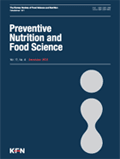
Preventive Nutrition and Food Science
Empowering Evidence-Based Nutrition for Optimal WellbeingPreventive Nutrition and Food Science, an esteemed journal published by the Korean Society of Food Science and Nutrition, serves as a pivotal platform for the dissemination of innovative research and insights in the fields of food science, nutrition, and dietetics. With an ISSN of 2287-1098 and an E-ISSN of 2287-8602, this journal is dedicated to advancing knowledge from 2012 through 2024, showcasing contributions that reflect the interplay between nutrition, health, and preventive strategies. Indexed in Scopus, it proudly holds a Q2 ranking in Food Science and a Q3 ranking in Nutrition and Dietetics as of 2023, positioning it among influential publications within these disciplines. Researchers, professionals, and students can explore cutting-edge studies that contribute significantly to evidence-based practices, enhancing public health and nutritional care. Although it operates under a subscription model, the journal plays a crucial role in fostering a deeper understanding of preventive nutrition, advocating for advancements that address contemporary dietary challenges.
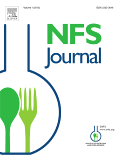
NFS Journal
Connecting scholars and practitioners through impactful research.NFS Journal, published by ELSEVIER, is at the forefront of research in the fields of Food Science and Nutrition and Dietetics, boasting an impressive impact factor that underscores its significance. With an Open Access model since 2015, the journal facilitates widespread dissemination and accessibility of high-quality research, making it a valuable resource for scholars and practitioners alike. Located in Germany, this journal has made its mark with its prestigious Q1 ranking in both Food Science and Nutrition and Dietetics as of 2023, positioning it among the top-tier journals in these disciplines. Additionally, it holds an outstanding standing in Scopus rankings, being placed at 10th out of 140 in Nutrition and Dietetics and at 27th out of 389 in Food Science, reflecting its influence and reach within the global academic community. The NFS Journal is dedicated to publishing the latest advancements and practices that shape our understanding of the relationship between food, health, and nutrition, appealing to researchers, professionals, and students eager to stay updated with novel insights and breakthroughs.
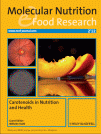
MOLECULAR NUTRITION & FOOD RESEARCH
Transforming Nutritional Insights into Practical Solutions.MOLECULAR NUTRITION & FOOD RESEARCH, published by Wiley, is a premier journal dedicated to the rapidly evolving field of food science and nutrition. With an impressive impact factor and a consistent position in the Q1 category for both Biotechnology and Food Science in 2023, this journal stands out as a leading platform for researchers, professionals, and students alike. The scope encompasses a comprehensive range of topics from molecular nutrition to innovative food research, with a focus on translating scientific insights into practical applications that enhance human health. As part of its commitment to accessibility, the journal offers open access options, allowing for wider dissemination and engagement with the academic community. Given its high ranking in Scopus—placing 42nd in Food Science and 62nd in Biotechnology—the journal plays a critical role in advancing knowledge and fostering collaboration in these essential fields. For over two decades, it has provided a vital forum for cutting-edge research, ensuring that each issue contributes significantly to the discourse around food and nutrition.
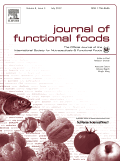
Journal of Functional Foods
Championing Open Access to Nutritional InsightsJournal of Functional Foods, published by Elsevier, is a leading open-access journal that has been at the forefront of research in the fields of Food Science, Medicine, and Nutrition and Dietetics since its establishment in 2009. With an impressive impact factor and consistently high rankings in Scopus, being placed in the Q1 category for both Food Science and Medicine (miscellaneous), and Q2 for Nutrition and Dietetics, this journal provides a crucial platform for the dissemination of innovative studies and findings related to the health benefits of functional foods. Recognized for its rigorous peer-review process and commitment to open-access publication since 2020, the journal ensures that critical research is freely accessible to a global audience, facilitating knowledge transfer and collaboration among researchers, professionals, and students. With converged years extending through 2024, the journal continues to play a vital role in advancing the understanding of how food can influence health and nutrition, making it an indispensable resource for anyone working in these rapidly evolving fields.

Food Production Processing and Nutrition
Advancing the intersection of food science and nutrition.Food Production Processing and Nutrition, published by SpringerNature, stands at the forefront of advancing knowledge in the vibrant fields of food science, nutrition, and public health. This esteemed Open Access journal, operational since 2019, plays a pivotal role in disseminating breakthrough research that intersects food production processes with nutritional insights, making it an invaluable resource for researchers, professionals, and students alike. With a commendable 2023 impact factor reflecting its robust scholarly contributions — Q1 in Food Science and Q2 in both Nutrition and Dietetics and Public Health, Environmental and Occupational Health — the journal not only emphasizes the importance of innovative food processing methods but also addresses pressing nutritional challenges faced globally. Located in the United Kingdom, it claims an impressive Scopus ranking, with a notable percentile standing across various categorical metrics. As such, Food Production Processing and Nutrition is essential for anyone aiming to deepen their understanding of how food systems impact public health through effective processing and nutritional strategies.
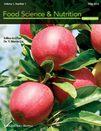
Food Science & Nutrition
Championing open access to vital food and nutrition research.Food Science & Nutrition is an esteemed peer-reviewed journal published by WILEY, dedicated to advancing the fields of food science and nutritional research. With an impressive impact factor and a prestigious Q1 ranking in the Food Science category, this journal stands out as a leading platform for innovative research, offering meaningful insights into the relationship between food composition and health outcomes. Since its transition to Open Access in 2013, Food Science & Nutrition has championed the global dissemination of knowledge, ensuring that vital research is accessible to researchers, professionals, and students alike. With a vast scope that encompasses both agricultural and biological sciences, the journal provides a comprehensive view of emerging trends, methodologies, and applications in food security and nutrition, making it indispensable for those invested in these critical areas.

INTERNATIONAL JOURNAL OF FOOD SCIENCES AND NUTRITION
Fostering critical discussions in nutrition and health.International Journal of Food Sciences and Nutrition, published by Taylor & Francis Ltd, is a premier, peer-reviewed journal that has established itself as a leading platform for the dissemination of cutting-edge research in the field of food science and nutrition. With an impressive Q1 categorization and an academic rank of #59/389 in Scopus’s Agricultural and Biological Sciences category, this journal is recognized for its significant impact, facilitating critical discussions and advancements related to food quality, safety, and nutritional health. Its historical significance, covering research from as early as 1947 to the present day, underscores the journal's long-standing commitment to scientific rigor and innovation. Researchers and professionals benefit from this journal's comprehensive and diverse range of studies, contributing to informed practices and developments in the food industry and public health. Although the journal is not open access, it provides various access options, ensuring that high-quality research is available to academics and practitioners alike. Stay connected with current trends and breakthroughs in food sciences and nutrition through this highly respected publication.

Nutricion Hospitalaria
Elevating Standards of Care with Open Access Nutrition StudiesNutricion Hospitalaria is a distinguished open-access journal published by ARAN EDICIONES, S L that has been advancing the field of nutrition since its inception in 1989. With an ISSN of 0212-1611 and an E-ISSN of 1699-5198, this journal plays a vital role in disseminating innovative research and clinical studies within the realms of medicine and dietetics. Hailing from Spain, it has established itself as a reputable source of knowledge, holding a Q3 ranking in both Medicine (miscellaneous) and Nutrition and Dietetics, reflecting its commitment to scholarly excellence and the importance of nutrition in healthcare. The journal is especially valuable for researchers and healthcare professionals seeking to enhance their understanding of nutritional science and its application in practice. With open access since 2003, Nutricion Hospitalaria ensures that critical research findings are readily available to a global audience, promoting collaboration and knowledge-sharing in the pursuit of better health outcomes.